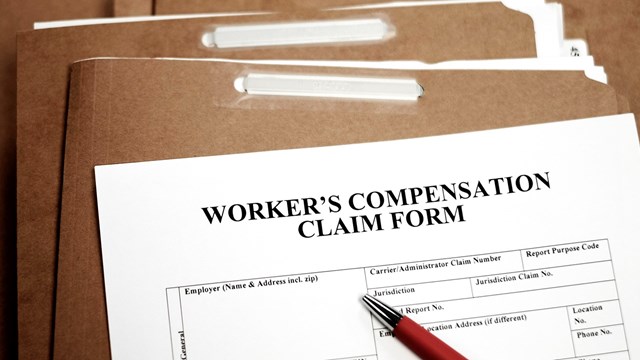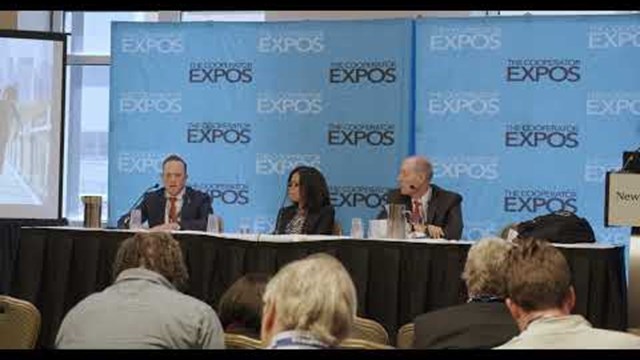The topic of insurance can provoke fear in the most steadfast of board members. It’s both terrifying in what its purpose implies, and yet at the same time mind-numbingly boring. It’s also one of the most important components in protecting our communities. In the past year, premiums—the monthly payments we make to insurers to maintain that protection—have increased dramatically. Stressful and mundane as it may be, understanding the components of coverage and how much your community should carry is crucial.
Property vs. Liability
There are many components to building insurance, but to (over)simplify, they fall into two broad categories: property and liability. Property refers to the physical plant—the building itself, the bricks and mortar of which it’s made. Liability refers more generally to those individuals and entities who might be held legally and/or financially responsible for actions arising from the property, its ownership, and its operation.
“There is a real difference between property insurance and liability insurance,” says Ryan Fleming, a partner at JGS Insurance, a Baldwin Risk Partner. Baldwin Risk is a national provider of all types of insurance. Fleming is based in New Jersey, and writes policies nationally.
“Property insurance is ‘first party’ insurance,” explains Fleming. As opposed to other insurances, it requires a certain cause of loss to trigger a claim to repair through insurance proceeds. “Coverage is provided for a specified property that is triggered by certain causes of loss.
“Liability insurance works differently,” he continues. “With property insurance, if a question of coverage—Do I have a claim?—arises, then the answer is simple: Tell me whether you have something sudden and accidental. Like water damage, for instance. The first question is, has there been a sudden occurrence? If that answer is yes, you have a claim. Liability, on the other hand, is coverage that provides either defense or indemnity for bodily injury.”
How Much Coverage?
“It’s critical to provide adequate property limits,” says Alex Seaman, senior vice president with Hub International, a worldwide insurer. Seaman is based in Woodbury, New York. “Construction costs have escalated dramatically in the past three to four years based on increased costs of labor, materials, transportation, and soft costs. Determining accurate replacement and rebuilding costs involves several factors including construction—frame, joisted masonry, or fire resistive—location, architecture, and design.” He notes that unusual or extraordinary design will result in higher replacement costs, and that New York City typically has far higher construction costs than most other locations.
The importance of having adequate property insurance coverage is multifaceted. “It provides financial protection,” says Todd Ross, managing director of One Point Brokerage, also a national provider of insurance coverage to the real estate industry. “Property insurance provides financial protection against unexpected events like fire, theft, natural disasters, or accidents that can cause damage or loss to your property. Adequate coverage ensures the building is protected from substantial financial burdens that may arise due to repairing or replacing your property after a loss.”
Additionally, Ross points out that mortgagee requirements will specify adequate insurance coverage to replace the property collateral for the mortgage. “Lenders want to protect their financial interest in the property, and they insist on property insurance to ensure that their financial interest in the property is safeguarded.”
How Is Coverage Determined?
As is the case with most everything, what constitutes adequate coverage is a function of value. Value in turn is determined through appraisal. What is important to note is that there are many types of value and appraisal. As Ross notes above, insurance coverage is based on replacement cost valuation. Simply, what would it cost to rebuild what was destroyed? While that sounds straightforward, in reality it may not be possible to replace what was built, say, a century ago at today’s costs. Those hand-laid parquet floors may in fact be irreplaceable.
“When it comes to determining how much it would cost to replace your property with like kind or quality, one should take enough time to figure out how to be accurate,” says Fleming. “In a scenario where you’ve got a property, a building, whatever it is, what would it cost to replace it, and how is that determined? Typically, the most appropriate way is to have an appraisal of the property done. In today’s market what would it cost to put the building back up? It’s not market value, it’s replacement cost value. Insurance appraisers appraise replacement cost values, not market values. The two may be very different.”
“When determining the amount of coverage for an entire building, several factors are considered to assess the replacement or repair costs in the event of damage or loss,” Ross continues. “They include building construction and materials, square footage, local building costs, age, building features and upgrades, local building codes and regulations, and any additional structures on the site. Insurance carriers use these general factors, along with their own internal underwriting guidelines, to evaluate and determine what the replacement cost of a building may be; however, the only way to get a truer understanding of what the replacement cost may be at any single point in time is to have a certified replacement cost study done by a qualified appraiser.”
“Property valuations should be reviewed at least every other year,” cautions Seaman. “If valuations are not current, there is a risk of being underinsured for a catastrophic claim.”
Fleming also notes that insurance limits should be considered in making rebuild decisions and policy selection. The insurance limit is the maximum amount a carrier will pay for any given loss. “If you want to rebuild, but not exactly what was there before, insurance will pay for the rebuild,” he says. “However, the policy pays the limit of dollars to the insured provided through the policy and gives the insured the ability to do with it what they would like. The only caveat is that the insurer will hold some of the claim payment back as a holdback until you prove you have rebuilt yourself. But, you don’t have to build an exact replica of what was there before.”
What About Homeowner Policies?
In addition to building-wide property insurance, apartment dwellers, whether renters or owners, are well advised to carry homeowners’ insurance. Homeowner policies cover the contents of your home, as opposed to the bricks and mortar that surround those contents.
“Coverage in every community is different,” says Fleming, “and depends on governing documents. Coverage can be determined in three ways: bare walls, single entity, or all-in. Bare walls means the association would buy insurance with coverage up to the unfinished interior surfaces of units. The unit owner insures unfinished interior surfaces. Single entity means we consider it one structure. The association insures everything, including the interiors of units, but excludes upgrades and improvements made by owners inside units. Things such as upgraded stoves and finishes. All-in is all in; everything is covered. This is usually the case in co-ops, because you’re a shareholder, not an owner. You can’t insure what you don’t own, so they need this. Illinois and Massachusetts are all-in states. Upgrades and betterments are covered, but not your clothes, furniture, etc. If you can shake it out, it’s considered contents.”
“An individual homeowner’s insurance policy is specific to their unit, as opposed to the association’s insurance policies, which cover the areas and property that the association is responsible for,” adds Ross. “The individual homeowner’s insurance policy should operate in conjunction with the association’s insurance policies in the event of loss that impacts both; the insurance coverage carried by each should work like a puzzle that fits together and the building governing documents lay out and specify which party is responsible for what.”
How Often to Review?
“It’s important to regularly reassess and update coverage limits because building values, construction costs, and other factors change over time,” says Ross. “Ideally boards should adjust the property coverage amount every year to account for the changes in cost to rebuild a building. One way to do this is to increase your building value every year in increments, so that the property value is not hit with a one-time large property limit increase—which inevitably occurs. Also, at least once a year, when their property insurance renews, boards should review the insurance coverage for their co-op or association’s physical structures to ensure it aligns with the property’s value, potential risks, and the evolving needs of the community.”
Not properly reviewing and maintaining your coverage can bring about negative unintended consequences, including financial burden when a loss occurs, limited rebuilding or repair options, legal and compliance issues, strained relationships, and in some cases board liability. Insurance reviews may not be as sexy as say, renovating the lobby, but in the end insurance is one of the pillars on which your building and community stand.
A J Sidransky is a staff writer/reporter for CooperatorNews, and a published novelist. He may be reached at alan@yrinc.com.










Leave a Comment